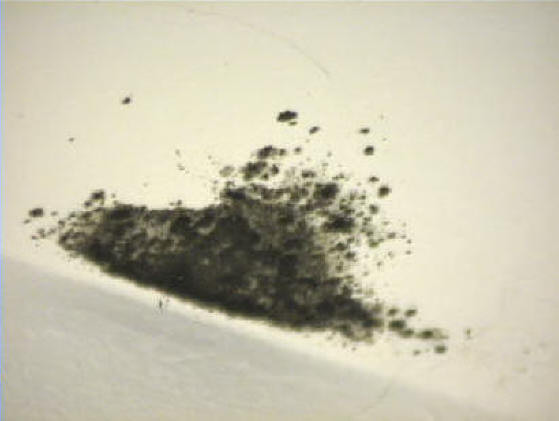Testing for mold at Lawrence High
LTA claims teachers are ill, district says air is checked
Lawrence School District and Lawrence Teachers Association officials agreed to bring in another environmental services company to test the air quality in Lawrence High School.
LTA officials are claiming that the school district has not fully investigated all the potential environmental hazards caused by Hurricane Sandy damage to the high school building.
Olmsted Environmental Services, Inc. based in upstate Garrison, has been hired by the district at a cost of $960, to conduct a one-day evaluation of the school’s environmental health. The test was conducted Tuesday.
Three teachers have been stricken with mold-related illnesses, one last spring and two this fall, according to the LTA. One of the teachers who fell ill in the fall suffered severe respiratory distress outside one of the two classrooms where black mold was found and was taken to a hospital.
“The health and safety of students and teachers, who are in a school building where black mold has been found and two rooms closed off, should be paramount,” LTA President Lori Skonberg stated in a prepared release. The LTA says it has photographs of the mold, but declined to release them.
Indoor mold growth was found under classrooms 107 and 147 in the high school last fall by the JC Broderick & Associates, the St. James-based company that has been conducting air quality tests every two months and visuals inspections every two weeks for the past year, according to Superintendent Gary Schall. The cost to date is $62,000, he said. “Air tests are conducted on a regular basis and no test we have taken has raised any level of concern,” Schall. “With the heightened level of concern there is no district anywhere that is doing the amount of test control that we have post-Sandy.” The firm declined to comment on the work they have done for Lawrence saying it’s company policy not to speak about their clients.
Flooding caused by the Oct. 29, 2012 storm damaged the high school and forced the district to close the building for nearly four months from mid-January of last year to early April. The building underwent extensive repairs, including the installation of a completely new electrical system, at a cost of approximately $8 million. High school students were shifted to the middle school and fifth- and sixth-graders were moved to two of the district’s three elementary schools.
Black mold grows on materials with a high cellulose and low nitrogen content, such as fiberboard, gypsum board, paper, dust and lint, according the Center for Disease Control and Prevention. Moisture from water damage, excessive humidity, water leaks, condensation, water infiltration, or flooding causes the mold growth. Constant moisture is required for its growth.
There are certain molds that can produce toxins (toxigenic). Mold does exist everywhere — in the air and on many surfaces — but there are “very few reports that toxigenic molds found inside homes can cause unique or rare health conditions such as pulmonary hemorrhage or memory loss,” the CDC wrote on its website. The cases are rare, and a causal link between the presence of the toxigenic mold and these conditions has not been proven. The type of mold should be identified and the CDC advises that “all molds should be treated the same with respect to potential health risks and removal.”
Originally, the LTA wanted the New York State for Occupational and Safety Health (NYCOSH) to visit the high school. But the district rebuffed that idea as NYCOSH is viewed as more of an advocacy group than an objective entity.
Have an opinion about this topic? Send your letter to the editor to jbessen@liherald.com.

 45.0°,
Mostly Cloudy
45.0°,
Mostly Cloudy 




